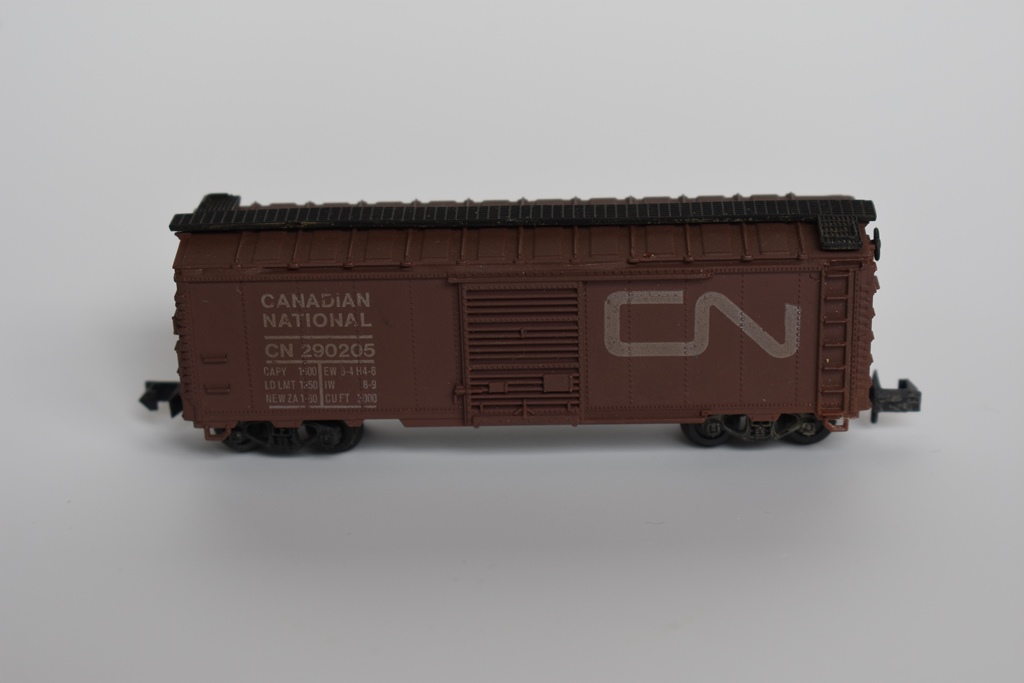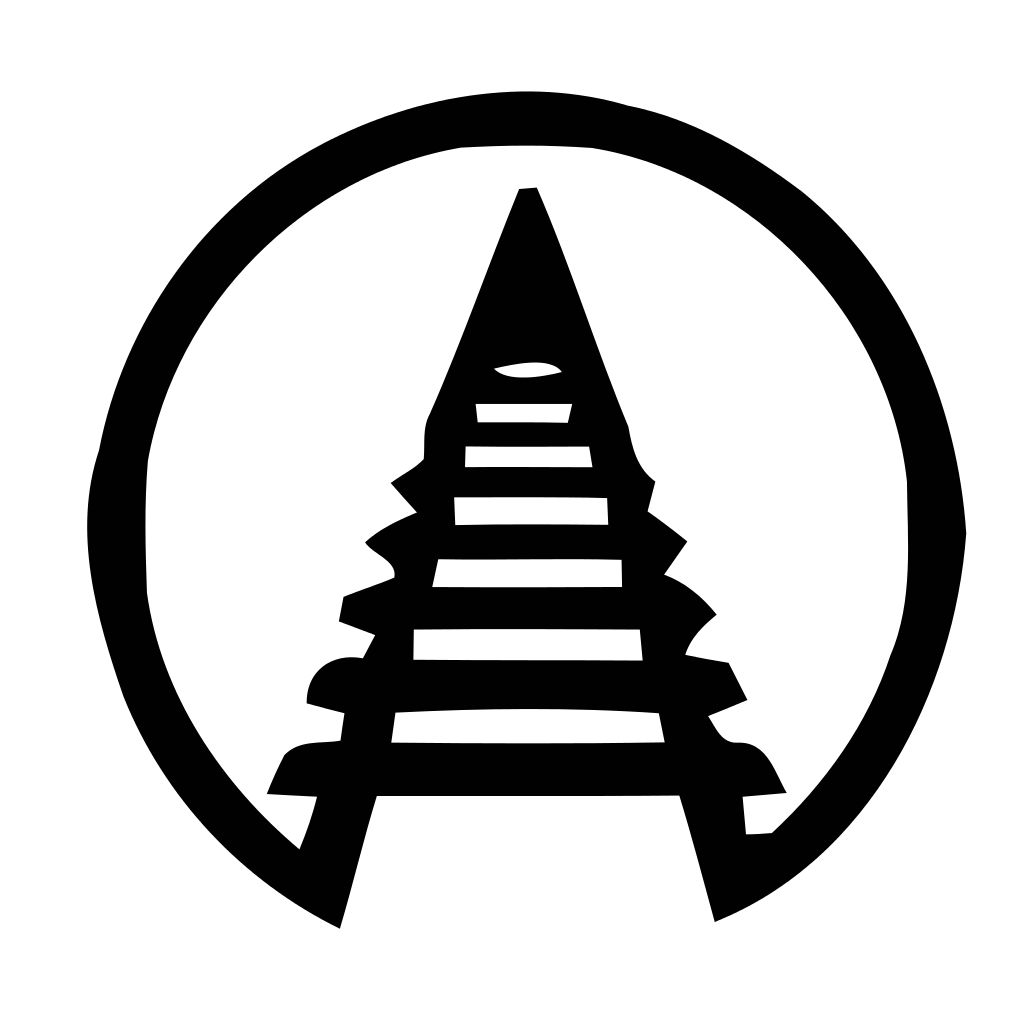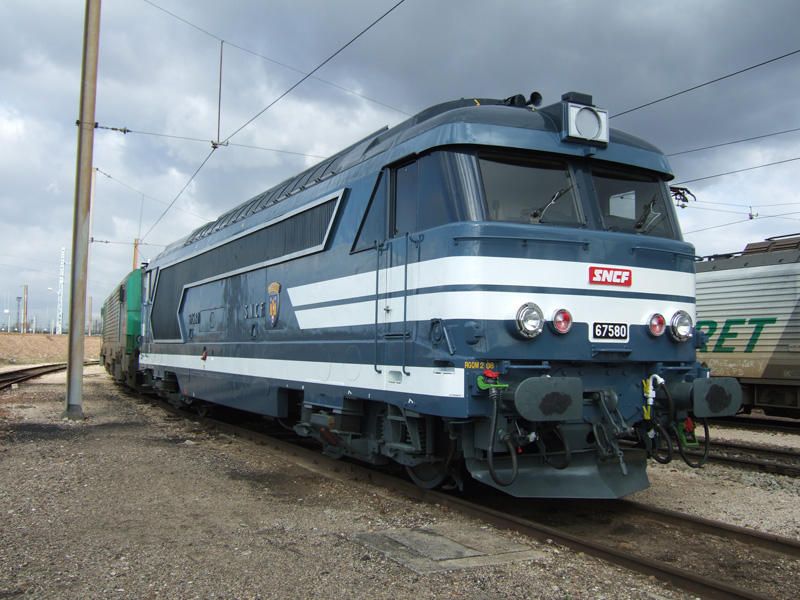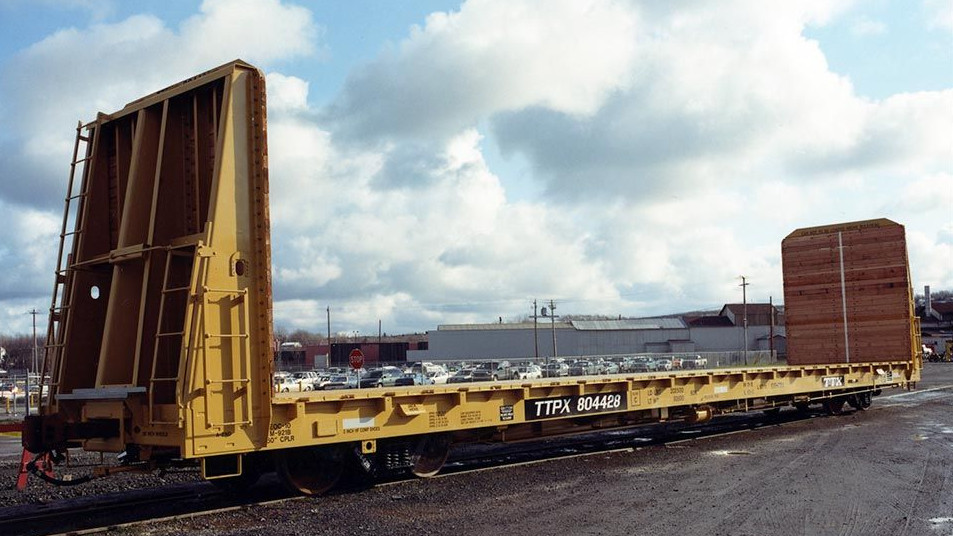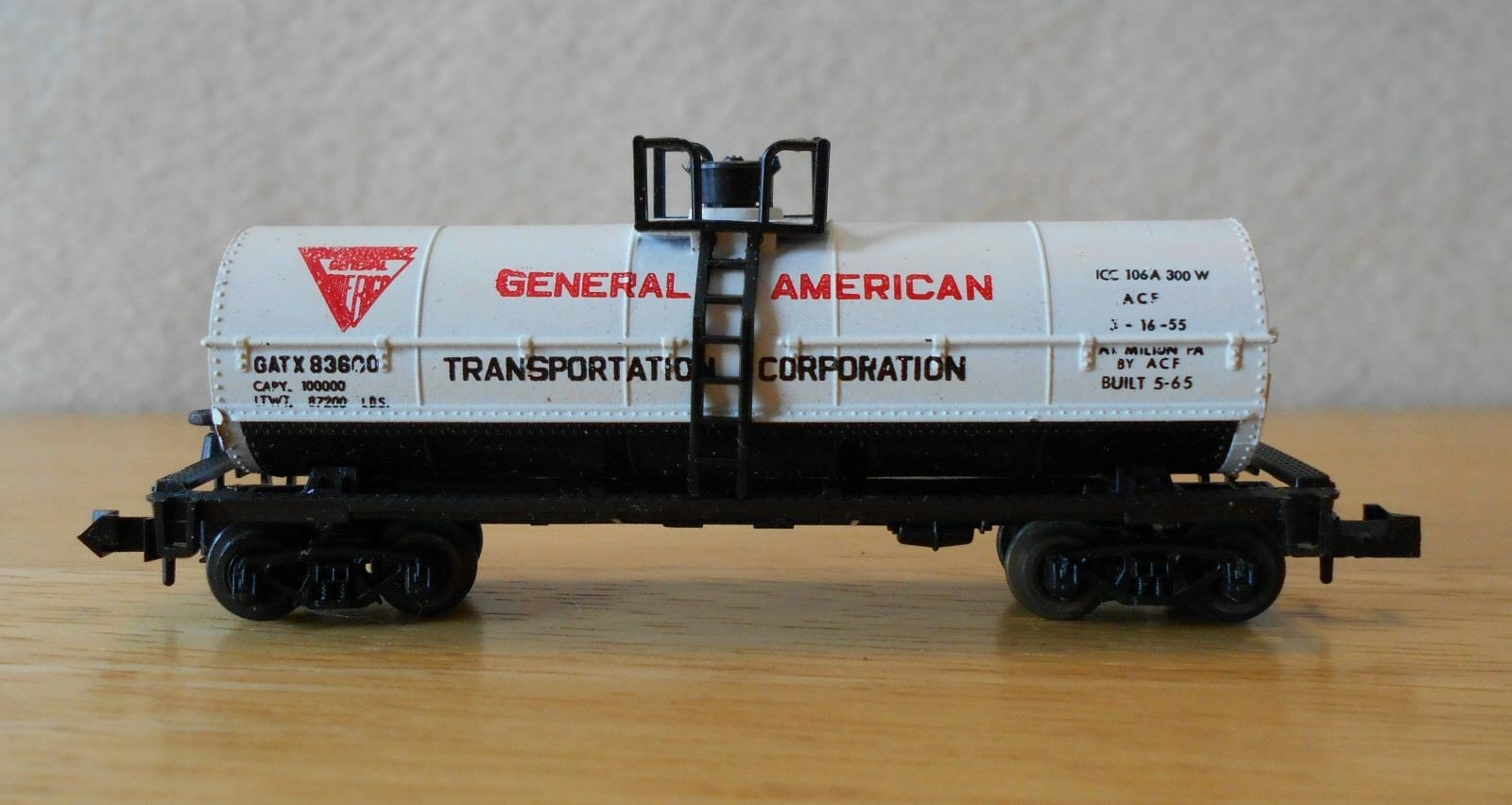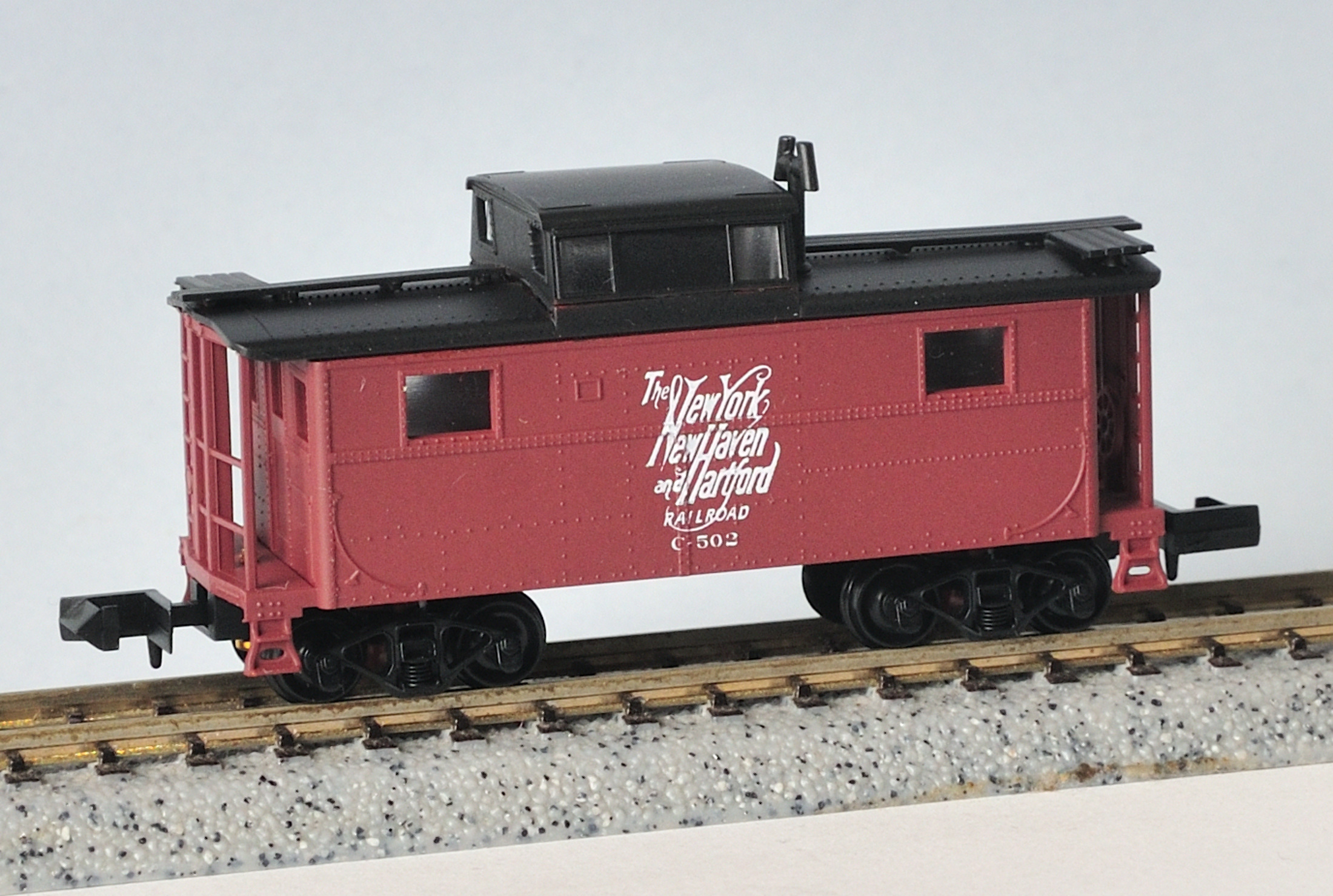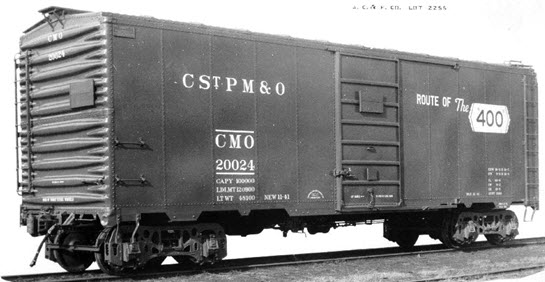Model Information: Arnold released this car in 1960. There has been several versions over years.
The early version came with two different underframes and its roofwalk was molded-on. From 1960 through about 1964, this car was part of the "Rapido 200" series and used metal trucks, huge plastic wheels and "Metal Hook" couplers; this early version shows a slot in the sides of the car where the shell is held in place on the underframe. In 1964, they switched to conventional Rapido couplers mounted on plastic trucks with metal wheels.
Arnold changed the body in 1969 to have a different door (looks more like a PS-1 now), different miscellaneous details and a separately glued on roofwalk.
The cars have also been imported by Walthers and Revell. They have not been made since Arnold closed their doors in 2005.
The early version came with two different underframes and its roofwalk was molded-on. From 1960 through about 1964, this car was part of the "Rapido 200" series and used metal trucks, huge plastic wheels and "Metal Hook" couplers; this early version shows a slot in the sides of the car where the shell is held in place on the underframe. In 1964, they switched to conventional Rapido couplers mounted on plastic trucks with metal wheels.
Arnold changed the body in 1969 to have a different door (looks more like a PS-1 now), different miscellaneous details and a separately glued on roofwalk.
The cars have also been imported by Walthers and Revell. They have not been made since Arnold closed their doors in 2005.
Prototype History: The Association of American Railroads had been establishing design standards for freight cars since the early part of the century. Each new design standard meant higher capacity, lighter, more durable cars.
The Modified 1937 AAR boxcar design was a result of the industries continued search for more freight volume per carload. The real first attempt at a standardized design had been the 1932 ARA steel boxcar with an inside height of 9'-4" . In 1936 the board of the AAR approved the 1937 AAR design with a 10'-0" inside height. This became a standard throughout the industry.
The Modified 1937 AAR boxcar design was a result of the industries continued search for more freight volume per carload. The real first attempt at a standardized design had been the 1932 ARA steel boxcar with an inside height of 9'-4" . In 1936 the board of the AAR approved the 1937 AAR design with a 10'-0" inside height. This became a standard throughout the industry.
Road Name History: The Canadian National Railway Company (reporting mark CN) is a Canadian Class I railway headquartered in Montreal, Quebec that serves Canada and the Midwestern and Southern United States. CN's slogan is "North America's Railroad". CN is a public company with 24,000 employees. It had a market capitalization of 32 billion CAD in 2011. CN was government-owned, having been a Canadian Crown corporation from its founding to its privatization in 1995. Bill Gates was, in 2011, the largest single shareholder of CN stock.
CN is the largest railway in Canada, in terms of both revenue and the physical size of its rail network, and is currently Canada's only transcontinental railway company, spanning Canada from the Atlantic coast in Nova Scotia to the Pacific coast in British Columbia. Its range once reached across the island of Newfoundland until 1988, when the Newfoundland Railway was abandoned.
Following CN's purchase of Illinois Central (IC) and a number of smaller US railways, it also has extensive trackage in the central United States along the Mississippi River valley from the Great Lakes to the Gulf of Mexico. Today, CN owns about 20,400 route miles (32,831 km) of track in 8 provinces (the only two not served by CN are Newfoundland & Labrador and Prince Edward Island), as well as a 70-mile (113 km) stretch of track (see Mackenzie Northern Railway) into the Northwest Territories to Hay River on the southern shore of Great Slave Lake; it is the northernmost rail line anywhere within the North American Rail Network, as far north as Anchorage, Alaska (although the Alaska Railroad goes further north than this, it is isolated from the rest of the rail network).
The railway was referred to as the Canadian National Railways (CNR) between 1918 and 1960, and as Canadian National/Canadien National (CN) from 1960 to the present.
Read more on Wikipedia.
CN is the largest railway in Canada, in terms of both revenue and the physical size of its rail network, and is currently Canada's only transcontinental railway company, spanning Canada from the Atlantic coast in Nova Scotia to the Pacific coast in British Columbia. Its range once reached across the island of Newfoundland until 1988, when the Newfoundland Railway was abandoned.
Following CN's purchase of Illinois Central (IC) and a number of smaller US railways, it also has extensive trackage in the central United States along the Mississippi River valley from the Great Lakes to the Gulf of Mexico. Today, CN owns about 20,400 route miles (32,831 km) of track in 8 provinces (the only two not served by CN are Newfoundland & Labrador and Prince Edward Island), as well as a 70-mile (113 km) stretch of track (see Mackenzie Northern Railway) into the Northwest Territories to Hay River on the southern shore of Great Slave Lake; it is the northernmost rail line anywhere within the North American Rail Network, as far north as Anchorage, Alaska (although the Alaska Railroad goes further north than this, it is isolated from the rest of the rail network).
The railway was referred to as the Canadian National Railways (CNR) between 1918 and 1960, and as Canadian National/Canadien National (CN) from 1960 to the present.
Read more on Wikipedia.
Brand/Importer Information: 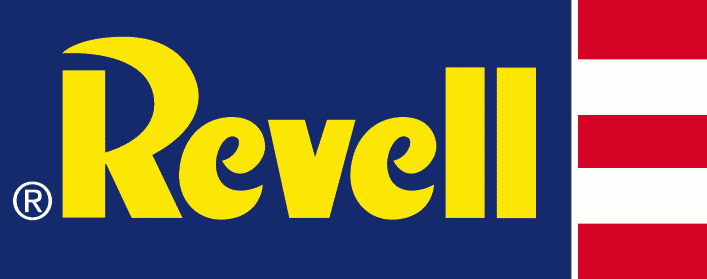 Revell was Arnold’s importer in the 60s.
Revell was Arnold’s importer in the 60s.
Starting in 1967, Arnold and Revell, Inc. of Venice, California entered into a distribution relationship. These new trains would be called MicroTRAINs. The first catalog, dated 1967, shows first generation Arnold rapido F-units on the cover.
More on this site.

Starting in 1967, Arnold and Revell, Inc. of Venice, California entered into a distribution relationship. These new trains would be called MicroTRAINs. The first catalog, dated 1967, shows first generation Arnold rapido F-units on the cover.
Item created by: CNW400 on 2019-05-02 08:32:25. Last edited by gdm on 2022-10-19 13:20:42
If you see errors or missing data in this entry, please feel free to log in and edit it. Anyone with a Gmail account can log in instantly.
If you see errors or missing data in this entry, please feel free to log in and edit it. Anyone with a Gmail account can log in instantly.


